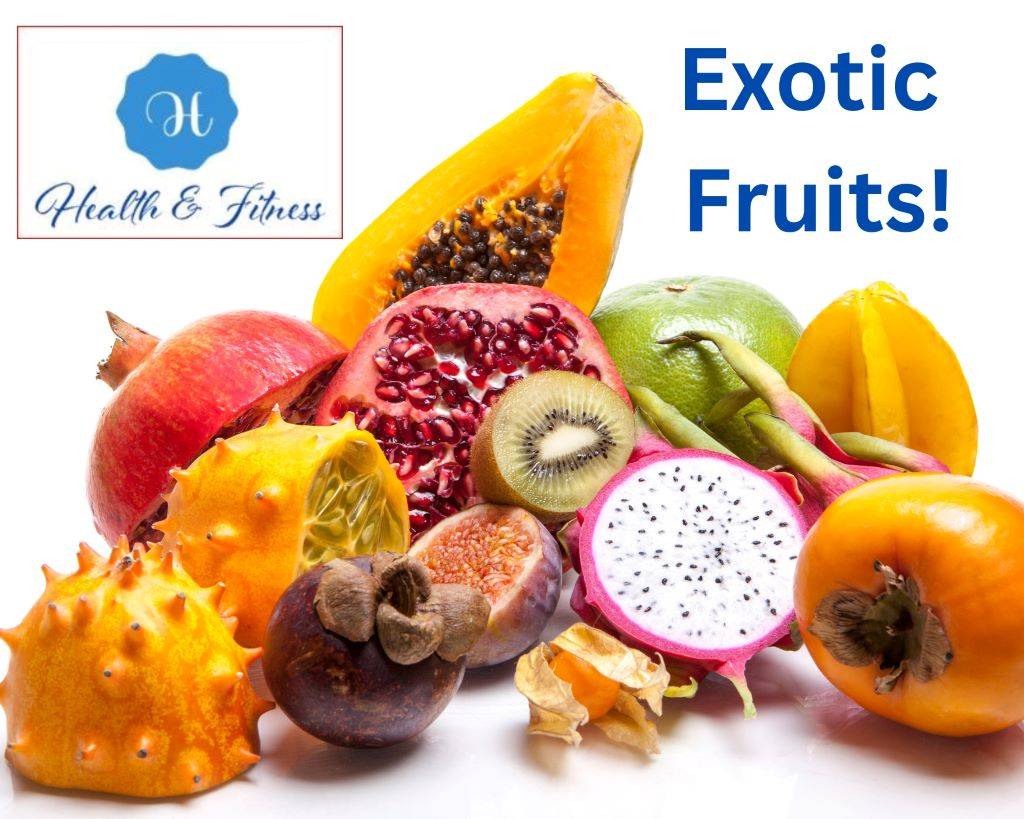Explore the world of Exotic Fruits: A tropical paradise of flavour and nutrition. Discover 20 exotic fruits that will delight your taste buds.
Introduction to 20 Exotic Fruits
Embark on a flavor-packed journey with these 20 exotic fruits that will tingle your taste buds and plate with a tropical paradise. If you’re tired of the identical old apples and oranges, it’s time to explore the world of exotic fruits. They are not unique in taste, but many are packed with nutrients and health benefits. We’ve got you covered with these mouth-watering tropical delights, from the sweet to the tangy. So let’s jump in and discover the vibrant world of Exotic Fruits!
List of Exotic Fruits
1. Mangosteen
Mangosteen is a small, round fruit with a thick purple rind and juicy, snow-white flesh. Often called the “Queen of Fruits,” it’s native to Southeast Asia and has a sweet, tangy flavour that’s a perfect blend of ripe strawberries, peaches, and citrus.
- Health Benefits: Rich in antioxidants and anti-inflammatory properties.
- How to Eat: Cut the rind away to reveal the juicy, segmented flesh. Enjoy it fresh, or use it in smoothies, salads, and desserts.
2. Salak (Snake Fruit)
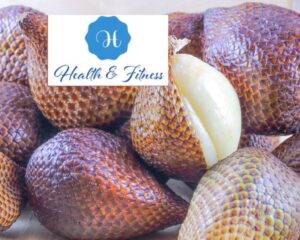
The Salak or Snake Fruit gets its name from its reddish-brown, scaly skin. Once you peel away the outer layer, you’ll find the sweet, tangy, and slightly astringent flesh reminiscent of a pineapple and apple mix.
- Health Benefits: A source of fiber, vitamins B, and C, and minerals.
- How to Eat: Peel the skin, remove the inedible seed, and enjoy the crunchy flesh raw or in fruit salads.
3. Jabuticaba
Jaboticaba is a Brazilian grape-like fruit that grows directly in the trunk of the jaboticaba tree. It has thick, dark-purple skin with sweet, white, gelatinous flesh that encloses tiny seeds.
- Health Benefits: Rich in antioxidants and anti-inflammatory compounds.
- How to Eat: Enjoy it fresh by popping the fruit into your mouth and discarding the skin and seeds. It’s also used in jellies, wines, and liqueurs.
4. Rambutan
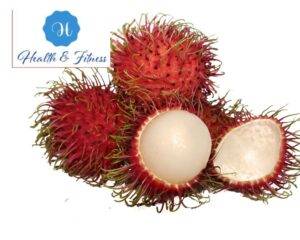
The Rambutan is a hairy, red fruit native to Southeast Asia. Once you break through the spiky exterior, you’ll find a juicy, translucent, sweet flesh similar to lychee.
- Health Benefits: Packed with vitamin C, manganese, and fiber.
- How to Eat: Cut through the spiky skin and pop the fruit out. Remove the inedible seed and enjoy raw flesh or add it to fruit salads, smoothies, and desserts.
5. Langsat
Langsat is a small, oval-shaped fruit with thin, yellowish skin and translucent flesh. It has a sweet and slightly tangy taste, similar to a mix of grapefruit and pineapple.
- Health Benefits: Contains vitamin C, fiber, and various antioxidants.
- How to Eat: Peel off the skin and enjoy the juicy flesh. Be sure to discard the bitter seeds.
6. Chayote
Chayote is a green, wrinkly fruit that resembles a pear and is used as a vegetable in many Latin American dishes. The flesh is crisp and has a mild, slightly sweet taste.
- Health Benefits: High in vitamin C, potassium, and fiber.
- How to Eat: Peel and slice the chayote, then steam, boil, or sauté. It can also be eaten raw in salads or pickled.
7. Buddha’s Hand
Buddha’s Hand is a unique yellow fruit resembling multiple fingers extending from a central base. It has a strong lemon fragrance and is often used as a natural air freshener or for zesting.
- Health Benefits: Contains vitamin C, essential oils, and antioxidants.
- How to Eat: While the fruit doesn’t have much flesh, you can use the zest in dishes and desserts or infuse it in beverages.
8. Dragon Fruit (Pitahaya)
Dragon Fruit, also known as Pitahaya, is a striking fruit with bright pink or yellow skin and white or red flesh speckled with tiny black seeds. It has a mild, sweet taste, and a texture similar to kiwi.
- Health Benefits: Rich in vitamin C, fiber, and antioxidants.
- How to Eat: Cut the fruit in half, scoop out the flesh, and enjoy it fresh or add it to smoothies, salads, and desserts.
9. Durian
The Durian is a large, spiky fruit from Southeast Asia, known for its pungent odour. The custard-like flesh has a unique, sweet, and creamy taste that some people love and others can’t stand.
- Health Benefits: Packed with vitamins, minerals, and dietary fiber.
- How to Eat: Cut through the spiky skin to reveal the edible sections of flesh. Enjoy it fresh, or use it in sweet dishes and desserts.
10. Horned Melon (Kiwano)
Horned Melon, also known as Kiwano, is a spiky, yellow-orange fruit with a bright green, jelly-like flesh. It has a mildly sweet and tangy taste with a hint of cucumber and banana.
- Health Benefits: Contains vitamin C, vitamin A, and antioxidants.
- How to Eat: Slice the fruit and scoop out the flesh. Enjoy it fresh, or add it to salads, smoothies, and desserts.
11. Custard Apple (Cherimoya)
Custard Apple, known as Cherimoya, is a green, bumpy-skinned fruit with sweet, custard-like flesh. The taste is a mix of banana, pineapple, and strawberry.
- Health Benefits: Rich in vitamin C, potassium, and fiber.
- How to Eat: Cut the fruit in half, remove the seeds, and scoop out the flesh. Enjoy it fresh, or add it to smoothies and desserts.
12. Tamarillo (Tree Tomato)
Tamarillo, also known as Tree Tomato, is an egg-shaped fruit with a thin skin that ranges from yellow to red. The tangy, slightly sweet flesh tastes similar to tomato but with a hint of passion fruit.
- Health Benefits: High in vitamins A and C, potassium, and antioxidants.
- How to Eat: Remove the skin, enjoy raw flesh, or cook it in sweet dishes.
13. Sapodilla
Sapodilla is a brown, fuzzy-skinned fruit with sweet, caramel-like flesh. It has a grainy texture, similar to a pear, and is native to Central America.
- Health Benefits: Rich in vitamins A and C, potassium, and fiber.
- How to Eat: Peel the skin and remove the seeds. Enjoy the fruit fresh, or add it to smoothies and desserts.
14. Soursop (Guanabana)
Soursop, or Guanabana, is a large, green, spiky fruit with white, fibrous flesh. It tastes sweet and sour, similar to a pineapple, strawberry, and citrus mix.
- Health Benefits: Contains vitamin C, antioxidants, and anti-inflammatory properties.
- How to Eat: Cut the fruit in half, remove the seeds, and scoop out the flesh. Enjoy it fresh in smoothies, juices, or desserts.
15. Feijoa (Pineapple Guava)
Feijoa, or Pineapple Guava, is an oval-shaped fruit with green skin and sweet, aromatic flesh. The taste is a mix of pineapple, guava, and mint.
- Health Benefits: High in vitamin C, fiber, and antioxidants.
- How to Eat: Cut the fruit in half and scoop out the flesh. Enjoy it fresh, or add it to smoothies, salads, and desserts.
16. Pepino Melon
Pepino Melon is a small, oval-shaped fruit with smooth, yellow skin and a sweet, melon-like taste. It’s native to South America and is a relative of the tomato and eggplant.
- Health Benefits: Contains vitamins A and C, potassium, and fiber.
- How to Eat: Enjoy fresh fruit, salads, or salsas.
17. African Horned Cucumber (Kiwano)
African Horned Cucumber, also known as Kiwano, is a spiky, yellow-orange fruit with a bright green, jelly-like flesh. It has a mildly sweet and tangy taste with a hint of cucumber and banana.
- Health Benefits: Contains vitamin C, vitamin A, and antioxidants.
- How to Eat: Slice the fruit and scoop out the flesh. Enjoy it fresh, or add it to salads, smoothies, and desserts.
18. Longan
Longan is a small, round fruit with thin, brown skin and translucent, juicy flesh. It has a sweet, floral taste, similar to lychee, and is native to Southeast Asia.
- Health Benefits: Rich in vitamin C, potassium, and antioxidants.
- How to Eat: Peel off the skin, remove the inedible seed, and enjoy raw flesh, desserts, and beverages.
19. Ugli Fruit (Jamaican Tangelo)
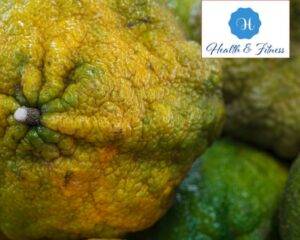
Jamaican Tangelo, also known as Ugli fruit, offers several benefits:
- Rich in Vitamin C for a healthy immune system.
- Good source of dietary fiber for digestion.
- Provides essential minerals like potassium and calcium.
- Low in calories, making it a healthy snack option.
- It was hydrating because of its high water content.
- Contains antioxidants for cell protection.
- Supports eye health.
- Refreshing and delicious taste.
- Versatile culinary ingredient.
Including Jamaican Tangelo in your diet adds flavour and contributes to overall health.
20. Carambola (Star Fruit)
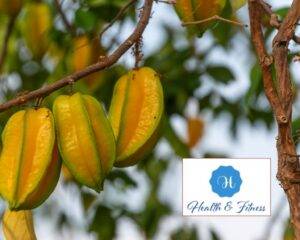
Appearance: Carambola showcases a distinctive star shape when sliced, hence its name. Its smooth and waxy skin ranges in colour from green to yellow.
Flavour: This tropical delight offers a balance of sweet and tart flavours, often likened to a mix of citrus fruits.
Health Benefits: we packed Carambola with vitamin C, fiber, and antioxidants, supporting digestion, boosting the immune system, and promoting heart health.
Conclusion
Now that you’re familiar with these 20 exotic fruits, it’s time to embrace their tantalizing flavours and nourishing qualities. Incorporate them into your recipes, whether a vibrant fruit salad, a refreshing smoothie, or a delectable dessert. These exotic fruits add a touch of tropical flair to your plate and offer many health benefits to enhance your well-being. So, embark on this culinary adventure, and let the exotic fruits transport you to a tropical paradise where flavours burst like a symphony of sunshine and nature’s abundance. Enjoy the journey, savour the tastes, and discover the wonders.

